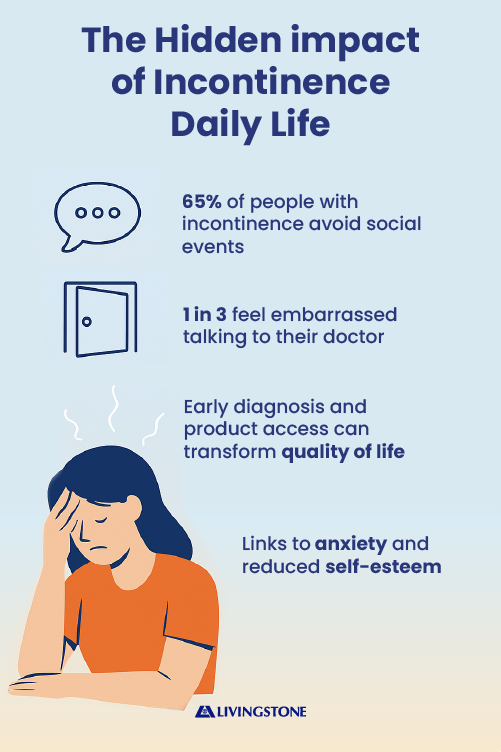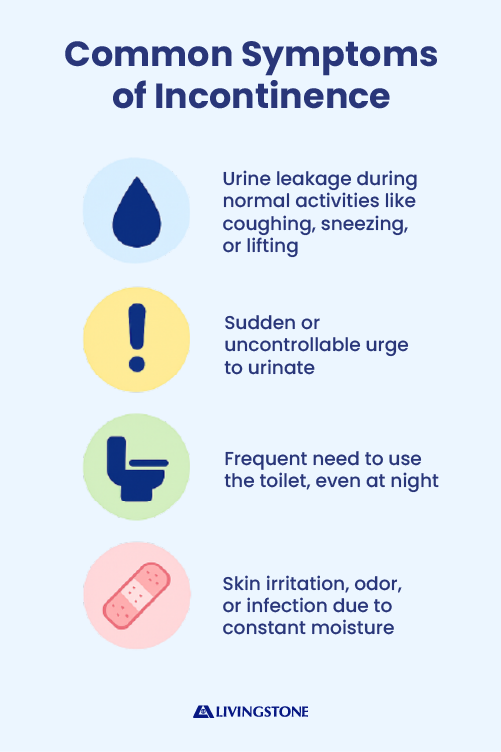Incontinence affects a significant portion of the Australian population, with over 4.8 million individuals experiencing bladder or bowel control issues. This condition can lead to physical discomfort, emotional distress, and financial strain due to the ongoing need for continence products. To alleviate some of these challenges, the Australian Government offers the Continence Aids Payment Scheme (CAPS), providing financial assistance to eligible individuals[1].

What Is CAPS?
The Continence Aids Payment Scheme is an initiative by the Department of Health and Aged Care that provides an annual, tax-free payment to eligible Australians living with permanent and severe incontinence. As of the 2024–25 financial year, this payment is $694.80, distributed as a lump sum into the applicant’s nominated bank account.
Eligibility includes:
- Being aged 5 years or older
- Having permanent and severe incontinence
- Being an Australian citizen or permanent resident
- Having incontinence caused by a neurological condition or other eligible causes as outlined in the list of eligible CAPS conditions[2]
Applications can be made through Services Australia with assistance from a registered healthcare professional, such as a continence nurse.
By supporting the purchase of continence aids, including pads, catheters, and other essential products, CAPS helps reduce out-of-pocket expenses, improve comfort, and promote better participation in daily life.
Managing Incontinence: More Than Just a Product

Incontinence is not a one-size-fits-all condition. It requires a personalised approach combining lifestyle changes, medical support, and the right continence products. For many, incontinence is managed best through a combination of:
- Pelvic floor exercises, which help strengthen bladder control
- Bladder retraining techniques, especially for those with urge incontinence
- Dietary adjustments, such as limiting caffeine and alcohol
- Medication, under the guidance of a general practitioner
- Skin care routines, which prevent irritation or infection due to leakage
Support from a continence nurse advisor can help individuals and carers develop a personalised care plan. You can find services via the National Continence Helpline[3].
Why Incontinence Takes Different Forms
Incontinence occurs due to a wide range of underlying causes. According to the Continence Foundation of Australia, the most common types include[4]:
- Stress incontinence – leakage when coughing, sneezing, or lifting
- Urge incontinence – sudden, intense urge to urinate, followed by leakage
- Overflow incontinence – bladder overfills and leaks without warning
- Functional incontinence – difficulty reaching the toilet due to mobility or cognitive challenges
- Mixed incontinence – a combination of stress and urge symptoms
Understanding the type of incontinence is critical for choosing the right products and management strategies. This is often done through clinical assessment or bladder diaries.
Choosing the Right Continence Products
Not all continence products are created equal. The best product depends on factors like absorbency needs, mobility, skin sensitivity, and personal preferences. Here’s a breakdown of the most effective options:
- Absorbent pads and liners: Ideal for light to moderate incontinence.
- All-in-one briefs: Suitable for people with limited mobility or overnight use.
- Pull-up pants: Discreet and convenient for active individuals.
- Reusable pads or pants: More environmentally sustainable and cost-effective in the long term.
For guidance, the Continence Foundation of Australia’s product directory is a trusted resource[5].
Maximising Your CAPS Payment
- Plan your yearly product needs in advance
- Buy in bulk from trusted suppliers to reduce per-unit costs
- Track spending to ensure funds are used wisely throughout the year
- Seek advice from a continence nurse or GP for product selection and correct use

For those in aged care or home care settings, pairing CAPS with other programs like My Aged Care packages may offer further support. You can learn more about this on the My Aged Care website[6].
The Continence Aids Payment Scheme offers more than just financial relief. It provides people with the means to manage a deeply personal condition with dignity, independence, and comfort. By combining product support with personalised care and community education, Australians affected by incontinence can take control of their health and lead fuller lives.
References
- Department of Health and Aged Care. (2024). Continence Aids Payment Scheme (CAPS). [online] Available at: https://www.health.gov.au/our-work/continence-aids-payment-scheme-caps [Accessed 2 May 2025].
- Department of Health and Aged Care. (2024). CAPS: Eligible Other Conditions. [online] Available at: https://www.health.gov.au/resources/publications/caps-eligible-other-conditions [Accessed 2 May 2025].
- Continence Foundation of Australia. (2024). National Continence Helpline. [online] Available at: https://www.continence.org.au/get-support/who-can-help/national-continence-helpline [Accessed 2 May 2025].
- Continence Foundation of Australia. (2024). Continence Foundation of Australia – Home. [online] Available at: https://www.continence.org.au/ [Accessed 2 May 2025].
- Continence Foundation of Australia. (2024). Continence products. [online] Available at: https://www.continence.org.au/incontinence/management/continence-products [Accessed 3 May 2025]
- My Aged Care. (2024). Home. [online] Available at: https://www.myagedcare.gov.au/ [Accessed 2 May 2025].
